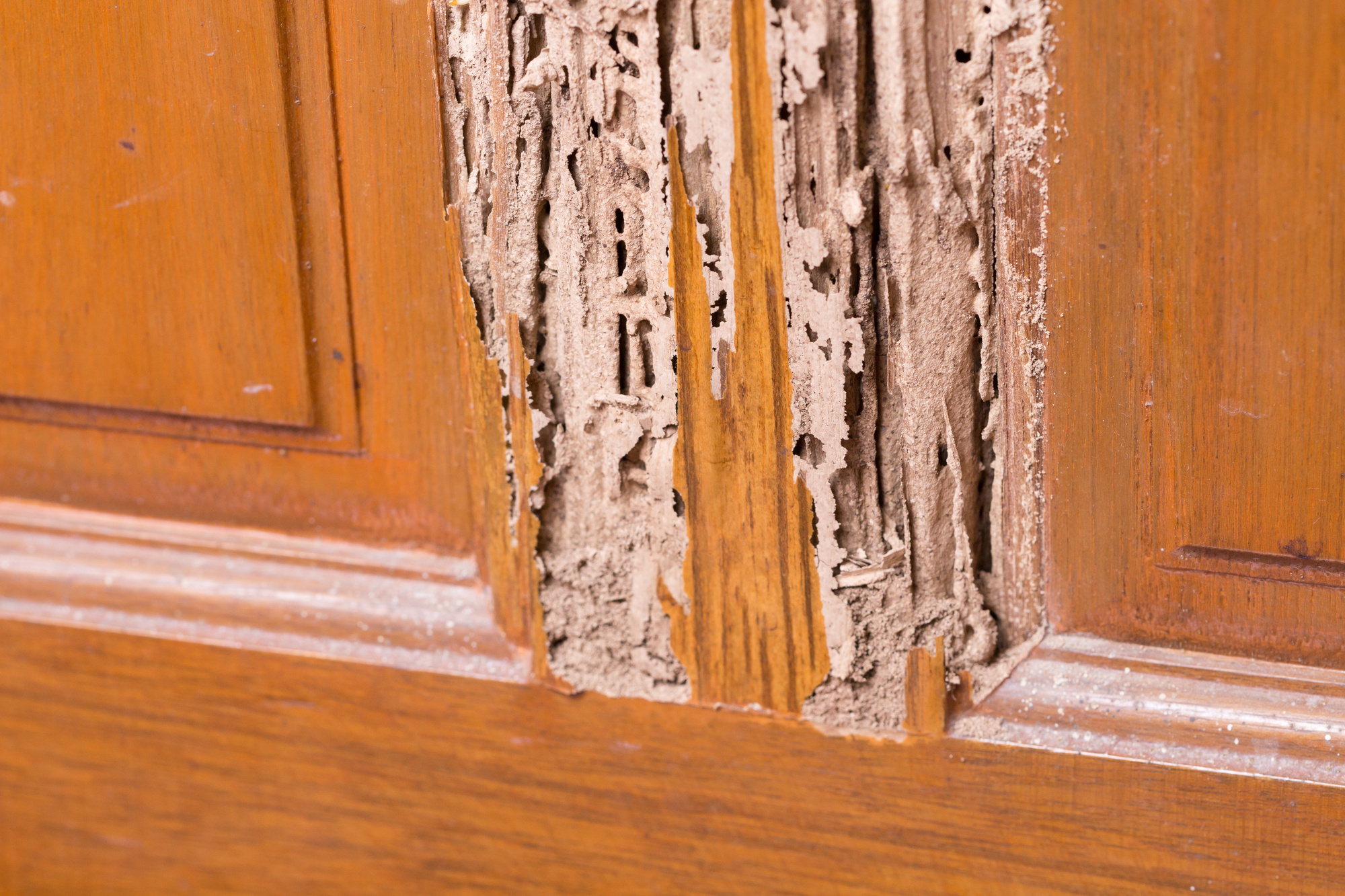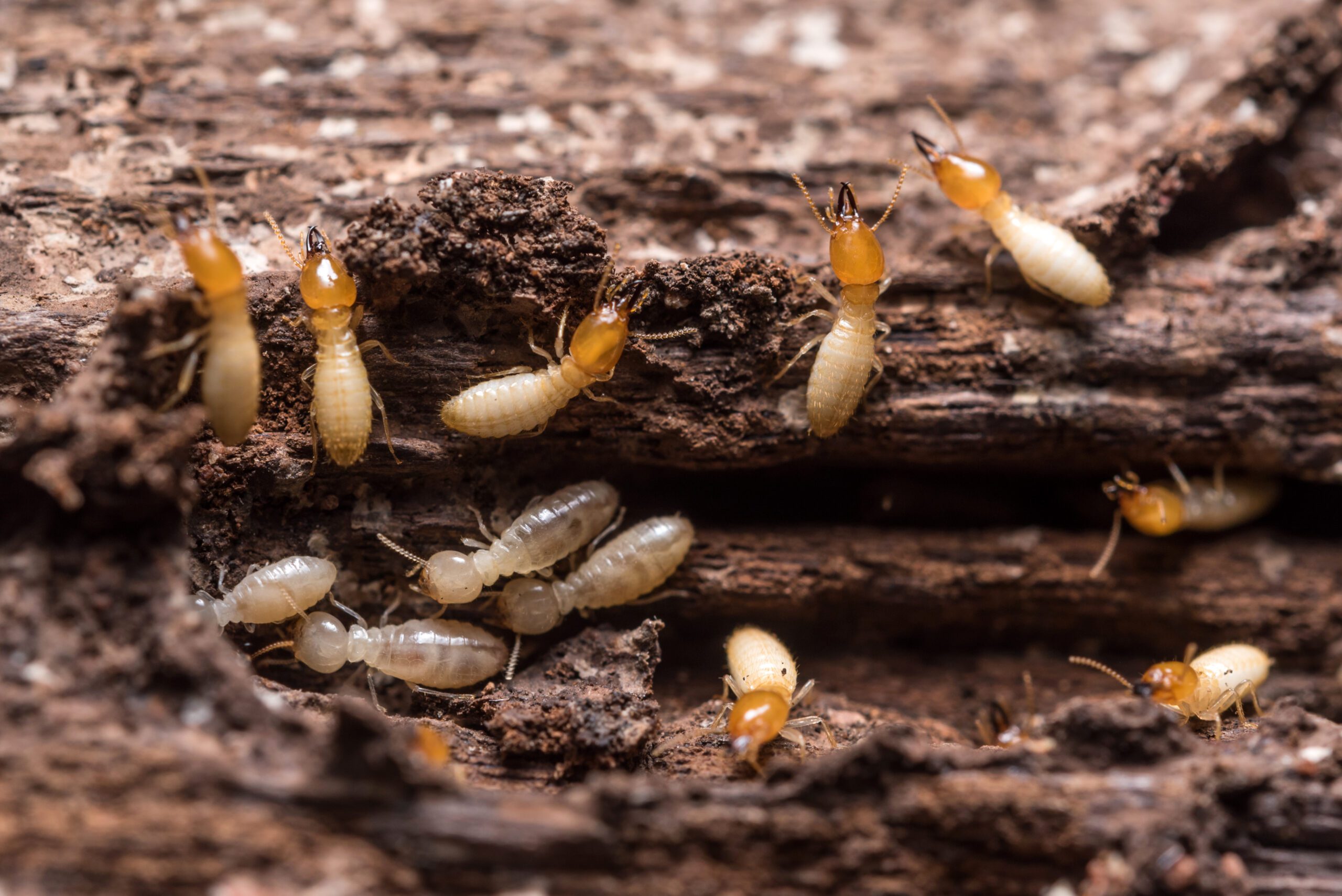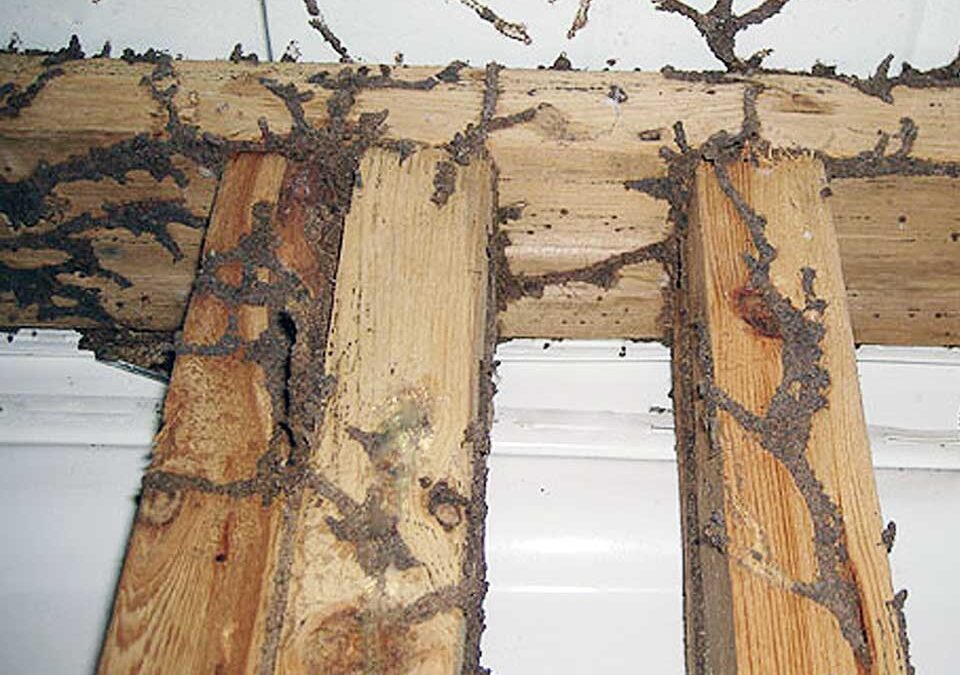Termite Removal in Ohio
Pest Control Xperts Services for Chillicothe, Including Kingston, Circleville, Williamsport, and Mount Sterling
Termites pose a major concern for many property owners in Ohio. When these insects settle inside structures, they feed on wooden supports and hidden beams, causing damage that often goes unnoticed until floors sag or walls show signs of warping. In Chillicothe, as well as neighboring towns such as Kingston, Circleville, Williamsport, and Mount Sterling, termites may infiltrate homes or businesses through soil contact near foundations, tiny cracks, or damp wood around leaking pipes. Left undetected, colonies grow rapidly, leaving families or staff worried about costly repairs. Pest Control Xperts offers professional termite removal in Ohio, safeguarding local structures by combining practices with specialized treatments for a thorough solution. If you have spotted suspicious mud tubes along basement walls or discovered hollow sounding beams, our exterminator in Chillicothe addresses the entire colony, sparing you the anxiety of ongoing feeding and hidden nests.
Many attempts at do it yourself termite sprays or partial measures fall short, killing a few visible worker termites without eliminating the main nest or queen. Subterranean termites often bypass superficial chemicals by forging new tunnels behind walls. By calling Pest Control Xperts early, you pinpoint moisture issues, wood to soil contact, and foundation cracks that let termites thrive, sealing them off while applying proven products such as liquid barriers or termite baits. Below, discover why termites invade Chillicothe properties, how to detect them before serious harm is done, the risks of ignoring an infestation, and how synergy merges with professional strategies to end termite threats and prevent re-infestations. Our holistic approach protects both families and businesses from wood destruction and steep repair bills.
Why Termites Target Chillicothe, Kingston, Circleville, Williamsport, and Mount Sterling
Even though Ohio winters can be cold, subterranean termites adapt by nesting in the soil around foundations, staying active whenever indoor heat or soil temperatures remain suitable. Once they locate damp or decaying wood, termite workers feed continuously day and night. A few core factors encourage termites to settle in buildings:
- Soil to Wood Contact
Termites often tunnel from the soil directly into wood where structures rest on or near ground level. Deck posts, fence planks, or siding that touches moist soil become a highway for worker termites seeking cellulose. - Moist or Leaking Areas
Termites thrive in damp wood. If families or staff miss minor plumbing leaks under sinks or a roof leak saturating a beam, termites move in. Repairing drips or fixing basement humidity, deters their expansion. - Foundation Cracks
Even small gaps along basement floors or near utility lines allow subterranean termites to gain entry. Sealing these openings, combined with professional termite removal in Ohio, reduces infiltration. - Long Unnoticed Infestations
Termites remain hidden behind walls or under floors, avoiding detection. Without regular or professional inspections, they can feed for months before members notice subtle changes, such as blistered paint or faint rustling inside beams. - Stacks of Wood or Debris
Storing firewood or lumber directly against building walls or letting old logs rot near foundations invites termite scouting. Storing wood off the ground and away from siding helps deny termites easy access.
Addressing these conditions quickly, uniting dryness or leftover wood management with professional methods, ensures termites have no bridging point from soil to structural frames.

Potential Harm from Termite Infestations
Termites feed around the clock, creating an ever widening labyrinth of tunnels. Delaying professional help can lead to:
- Structural Weakness
As termites hollow wooden studs, joists, or floor supports from the inside, floors may begin sagging or doors and windows shift out of alignment. Extensive rebuilding becomes costly if families or staff wait too long. - Costly Repairs
Replacing termite eaten beams, addressing cosmetic damage like bubbling paint, and performing dryness corrections often require significant budgets. Early synergy with dryness plus professional intervention cuts these expenses. - Stress for Families or Staff
Knowing hidden insects are chewing beams fosters anxiety about safety or potential collapse. Repeated guesses about minor squeaks or sagging floors intensify concern until the colony is destroyed. - Business Disruptions
Restaurants, shops, or offices discovered with termite damage sometimes need partial closures for repairs. Dryness or leftover wood steps combined with professional solutions contain the problem, preserving brand reputation. - Spread to Neighboring Units
In multi occupancy buildings, such as apartment complexes, subterranean termites may tunnel behind walls or through shared soil lines, eventually affecting multiple residents. Professional termite removal in Ohio halts expansions building wide.
How to Detect a Termite Infestation
Though subterranean termites hide behind walls or in soil, families or staff might spot:
- Mud Tubes Along Foundations
Termites build pencil sized dirt tunnels bridging soil to wood. Seeing these tubes near basement walls or porch supports confirms active termite foraging. - Swarming Termites or Discarded Wings
Winged reproductives called swarmers emerge in spring or early summer. Sightings of small transparent wings on windowsills or floors indicate a nearby nest. - Bubbling or Warped Paint
Termites tunneling close to the wood surface cause paint or wallpaper to blister. Dryness efforts rarely fix this unless the termite colony is removed. - Hollow Sounding Wood
Tapping beams or floors that produce a papery echo implies termites ate the interior, leaving just a thin outer layer. Dryness or leftover wood management alone cannot fix structural voids. - Faint Rustling Noises
Sometimes families hear soft clicking or tapping if large numbers of termite workers chew a beam. This sign usually emerges late, once dryness or steps have not prevented a big colony.
Spotting even one or two of these clues means specialized help is critical for preventing deeper destruction.
Main Termite Species in Ohio
Subterranean Termites
The biggest threat, building nests in soil and traveling in mud tubes for moisture. They heavily damage wood if dryness or synergy in removing damp wood is not addressed.
Drywood Termites
Less common in Ohio, they do not rely on soil contact. Dryness or leftover wood steps remain relevant if these termites arrive via infested furniture or shipments.
Dampwood Termites
Favor rotted or waterlogged lumber, occasionally found if dryness steps are ignored near leaking pipes or standing water. Dryness is essential to hamper them.
Subterranean termites remain the top worry, typically handled through professional termite removal in Ohio.

Why an Exterminator in Chillicothe Is Essential
Do it yourself attempts such as general sprays seldom penetrate deep enough to destroy the queen or colony. Subterranean termites bypass treated zones behind walls. A qualified professional ensures:
- Thorough Inspection
Experts check basements, foundations, crawl spaces, or dryness lapses that sustain colonies. Tasks like clearing damp wood or soil contact are identified. - Accurate Methods
Some infestations respond best to a soil barrier, while dryness plus leftover steps help. Others need termite baits or spot treatments. The right method targets the entire colony from workers to the queen. - Safe Application
Termiticides or baits remain around building exteriors or hidden zones, sparing living areas from broad chemical usage. Families often stay in place, just avoiding newly treated perimeters until dryness. - Colony Wide Elimination
Destroying the queen ensures families see no leftover workers forging new tunnels. synergy in dryness also keeps wood from reattracting new termite swarms. - Monitoring and Follow Up
Termite baits must be checked to confirm worker consumption. Dryness or leftover wood removal can keep re entry from happening. Reinspections finalize peace of mind.
Pest Control Xperts Termite Removal in Ohio
At Pest Control Xperts, merges with advanced techniques for termite removal in Chillicothe and the surrounding towns:
1. Inspection
We start by examining basements, crawl spaces, or foundation lines for mud tubes, damp beams, or rotting wood. Dryness oversights or leftover wood contact get noted. We confirm whether families suspect swarmers or if dryness steps must be improved.
2. Chosen Treatment
We might trench and apply liquid termiticides around foundations, forming a soil barrier, or install termite bait stations. Dryness synergy helps hamper future expansions. Leftover wood near siding might be removed to block direct contact.
3. Education
Removing current termites is only half the battle. Tasks include repairing leaks, storing firewood off the ground, and removing rotted logs near walls. Dryness efforts hamper the moist conditions termites favor.
4. Monitoring and Follow Up
If owners choose baits, we schedule or professional checks to ensure worker termites feed on them. dryness synergy remains crucial to deny damp wood. If sightings persist, we refine or reapply solutions until property is termite free.
5. Commercial or Multi Housing
Businesses or multi unit residences in Circleville or Mount Sterling might see or staff complaints about swarming termites near common walls. We handle building wide checks, synergy in dryness or leftover wood removal, and discreet scheduling to avoid customer alarm.
Benefits of Prompt Action
Allowing termites to linger inside beams or behind walls invites deeper structural harm. Dryness synergy or leftover wood steps alone do not remove established nests, so each passing week intensifies repair bills if a colony grows. Quick professional termite removal lowers stress and saves money from advanced damage repairs.

Tips to Prevent Re Infestations
- Eliminate Wood to Soil Contact
Deck posts or siding that directly meet moist soil let termites enter structures. Placing footers or maintaining a gap retards infiltration. - Fix Plumbing Leaks
dryness remains vital. Subterranean termites rely on moisture. Quickly repairing minor drips denies them hospitable beams. - Store Firewood Away from Walls
Keep logs or lumber several feet from building exteriors, and elevate them off soil. Dryness or leftover wood improvements helps hamper termite bridging. - Clear Yard Debris
Rotted stumps or fallen limbs near foundations can harbor termite scouts. Yard upkeep ensures no stepping stones exist for easy colony expansion. - Regular Inspections
Professional checks once or twice a year reveal any fresh mud tubes or rotting beams. Vigilance spots early signs of swarmers or suspicious wood damage.
Why Pest Control Xperts for Termite Removal
- Local Insight
We handle termite removal in Ohio, knowing building layouts across Chillicothe, Kingston, Circleville, Williamsport, and Mount Sterling. Our exterminator identifies moisture or dryness oversights that encourage termites. - Exact Treatments
We do not randomly spray living zones. Instead, we focus on foundation soils or behind walls, placing termiticides or baits. Dryness preserves safety while ensuring termites find lethal zones. - Education and Support
We instruct families on dryness steps, removing leftover wood near siding, and annual checks. - Monitoring
If owners opt for bait stations, we re-check them to confirm termite feeding. - Same Day Scheduling
Discovering mud tubes or swarmers can alarm families. We often arrange same day service, halting expansions before anxieties or damage intensify.
Contact Us for Termite Removal in Ohio
If members spot suspicious mud tubes in Chillicothe, see discarded wings around windows near Kingston, or suspect rotting beams in a basement in Circleville, Williamsport, or Mount Sterling, do not allow hidden insects to continue feeding. Call Pest Control Xperts for professional termite removal in Ohio. Our exterminator in Chillicothe pinpoints the colony, applies liquid barriers or baits, and guides synergy steps like dryness measures or leftover wood relocation. Contact us now for same day help, ensuring no further structural harm befalls your property or peace of mind. By uniting dryness improvements with specialized extermination, termites lose access to the damp wood they crave, letting your home or business remain stable, secure, and worry free.
